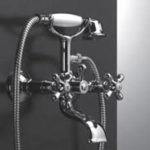Therefore, a contra asset can be regarded as a negative asset account. Offsetting the asset account with its respective contra asset account shows the net balance of that asset. Note that the debit to the allowance for doubtful accounts reduces the balance in this account because contra assets have a natural credit balance. Also, note that when writing off the specific account, no income statement accounts are used. This is because the expense was already taken when creating or adjusting the allowance. Regardless of company policies and procedures for credit collections, the risk of the failure to receive payment is always present in a transaction utilizing credit.
- These examples illustrate how contra accounts are used in various contexts to provide a more accurate picture of a company’s financial position and performance.
- Therefore, it can assign this fixed percentage to its total accounts receivable balance since more often than not, it will approximately be close to this amount.
- The purpose of the Accumulated Depreciation account is to track the reduction in the value of the asset while preserving the historical cost of the asset.
- In finance, a contra liability account is one that is debited for the explicit purpose of offsetting a credit to another liability account.
- In either case, using these accounts can help you better manage depreciation expense, keep your accounts receivable balance accurate, and properly dispose of and account for obsolete inventory.
- By doing so, they can bring their asset accounts to a more accurate position.
A delivery van is purchased by a business to use in delivering product and picking up materials. The company uses Straight-Line Depreciation to track the loss of value of the asset over time. Management may disclose its method of estimating the allowance for doubtful accounts in its notes to the financial statements.
If you’re using accounting software, you’ll be able to create contra accounts when setting up your chart of accounts. For example, when depreciating an asset, the accumulated depreciation account is used to reduce the book value of the asset while also keeping track of the total amount of depreciation that has been posted to date. Sometimes, it is important to keep the original balance of the accounts and create the contra accounts to be able to calculate the net value of the account. Accounts use this method of estimating the allowance to adhere to the matching principle.
What is the importance of Contra Asset Accounts?
Regardless of that, allowance for receivables accounts will exist for all companies that have account receivable balances. This account helps companies present a more accurate accounts receivable balance on the financial statements. Accumulated depreciation is the most prevalent type of contra-asset account. It represents all the depreciation related to an asset or the company’s overall assets.
The auditors aim to keep the balances at their adequate levels, but the controller might want to keep them as low as possible to reduce expenses and maximize profit levels. Contra Accounts serve as a reduction to the balance of their corresponding accounts to find their net values. The purpose of the Allowance for Doubtful Accounts is to track the reduction in the value of the asset while preserving the historical value of the asset.
What are the types of Contra Asset Accounts?
Rather, it is an adjunct account or a valuation account that is added to the face value of the bonds to arrive at the carrying value (or book value) of the bonds on the balance sheet. Accounts Receivable is an asset account that represents the amount of money due to a business for goods or services that have been delivered or used but not yet paid for by customers. Therefore, these companies must maintain an obsolete inventory reserve account to net off any unusable stock from the account. This requirement also comes from the accounting standard for inventories.
What Is a Contra Liability Account
As mentioned, a company will usually have debit balances in its asset accounts. The main advantage of using a contra asset account is to separate this reduction from the asset account with which it is paired. By doing so, you can more clearly see the total amount of the related asset account, which would otherwise have been obscured by the offsetting amount of the reserve. The proper size of a contra asset account can be the subject of considerable discussion between a company controller and the company’s auditors. The auditors want to ensure that reserves are adequate, while the controller is more inclined to keep reserves low in order to increase the reported profit level.
A less common example of a contra asset account is Discount on Notes Receivable. The credit balance in this account is amortized or allocated to Interest Income or Interest Revenue over the life of a note receivable. A contra asset is a negative asset account that offsets the asset account with which it is paired. The purpose of a contra asset account is to store a reserve that reduces the balance in the paired account. By stating this information separately in a contra asset account, a user of financial information can see the extent to which a paired asset should be reduced.
What is a Contra Asset Account? Definition, Types, Example, and More
To make your company investor-ready, optimizing your balance sheet is just one piece of the puzzle. A contra account is used to show the opposite effect or reduction of a related account. In the 10 best accounting software in 2020 other words, contra revenue is a deduction from gross revenue, which results in net revenue. Notes receivables are promissory notes that include a promise from a borrower to repay a lender.
Contra Account Examples
A Fixed Asset is a Long-term Asset used by a company to create revenue. Each year of an asset’s life, another year of Depreciation Expense is recorded. The offset to the Depreciation Expense account is Accumulated Depreciation. By understanding the nature and function of contra accounts, businesses can accurately reflect their financial position, providing transparency to stakeholders such as investors, creditors, and internal management. As mentioned, companies do not represent these accounts on the balance sheet. However, they will still appear on the notes to the financial statements with necessary disclosures.
Overall, contra accounts are offsetting balances that are the opposite of specific accounts. There are several examples of contra accounts, including accumulated depreciation, accumulated depletion, accumulated amortization, allowance for receivables, etc. These are all examples of contra-asset accounts, which are the prevalent type of contra accounts. A contra asset account is an asset account with a natural credit balance. This account is paired with and offsets another asset account, so that a net balance is reported on the balance sheet.
























































































